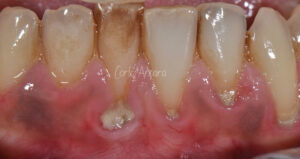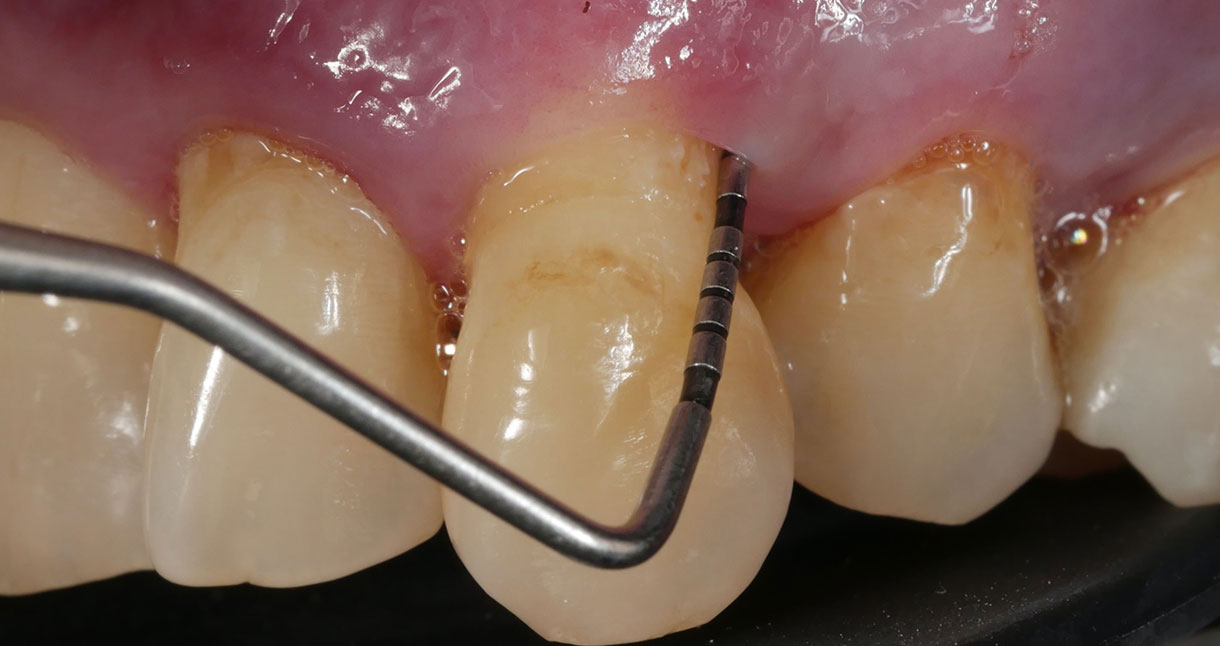Gingival bleeding during brushing is often underestimated. A healthy gum does NOT bleed Bleeding gums is always an indication of a periodontal problem (gingivitis or periodontitis) and tells us that there is no periodontal control.
The absence of bleeding is not always a reliable datum, i.e. it does not prevent the presence of periodontitis. For example, in smoking patients, even in the case of large active periodontal pockets, the gums may not bleed. Similarly, pain is not always present either. Patients often have a feeling of discomfort in the gums, but no specific pain. For all these reasons, a visit to a periodontist is always necessary, especially if parents or grandparents in the family have lost teeth because they moved, and therefore due to periodontitis. Periodontitis is always caused by the presence of subgingival plaque or tartar, but the types of bacteria that make up the plaque and
tartar in each patient are in some way genetically inherited.

It is important to carry out a check-up visit by a periodontist, not only to preserve the duration and health of your teeth but also to avoid possible serious systemic problems such as atherosclerosis, heart attack, and stroke which today are closely related to this pathology when it is not under check. Fortunately, today it is possible to control and therefore stop the progress of periodontitis.
The intervention of a trained and scrupulous periodontist is necessary for eliminating as much as possible the presence of tartar and therefore the bacteria under the gum. Also important is the action of the patient who has to clean his teeth in an almost obsessive way 4 times a day, also using accessory tools.
Often, periodontitis leads to aesthetic damage that can only be addressed after dental gingival health is achieved with aesthetic treatments such as veneers
